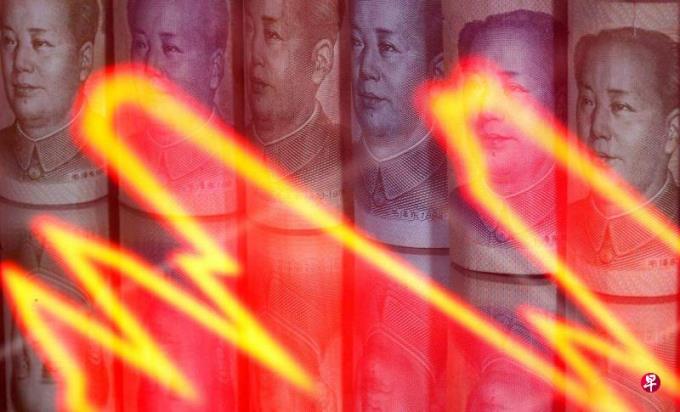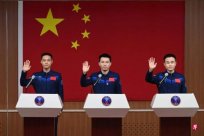
China ’s adding 1 trillion yuan (RMB, the same below, S $ 189.4 billion) of the good news of government bonds has driven the end of the Lukang stock market.The analysis pointed out that, in the context of China's economic growth rate this year, the new round of stimulus measures are mainly for the steady growth of next year, and at the same time play a role in boosting confidence and resolving risks.
The CSI 300 Index rose nearly 1.3%after the opening on Wednesday (October 25), and then fluctuated and fell, rising 0.5%throughout the day.The Shanghai Stock Exchange Index was 0.4 %, and the Shenzhen Stock Exchange Index rose 0.47 %.The Hong Kong Hang Seng Index closed up 0.55 %.
The Standing Committee of the National People's Congress of China approves the resolution of the State Council to issue a national bond and adjust the central budget plan this year.The Central Finance will issue 10 trillion yuan of Treasury bonds in the fourth quarter as a special government bond management.China's fiscal deficit rate is expected to increase from 3%to about 3.8%.
Zhu Zhongming, Minister of Finance of China, said at a press conference on Wednesday morning that although the deficit rate has increased slightly this year, the government debt ratio is still in a reasonable range, and the overall risk is controllable.After the investment of government bond funds, it will also actively drive domestic demand and further consolidate the trend of recovery of China's economy.
Luo Guoan, director of the Fixed Asset Investment Department of the National Development and Reform Commission of the China National Development and Reform Commission, who attended the same conference, introduced that these national debt mainly arranged post -disaster reconstruction and disaster prevention and disaster relief projects., Image engineering and political performance projects, etc., "use the national debt funds on the blade."
This is the first time that the Chinese government has adjusted the budget after the "two sessions" (National People's Congress and the CPPCC) at the beginning of the year in 15 years.This approach has only been four times in the past 30 years, and three of them occurred after the outbreak of the Asian financial crisis in the late 1990s, and once after the 2008 Wenchuan earthquake.
Different from the previous situation, as China ’s GDP (GDP) exceeded the expected increase by 4.9 % in the third quarter of this year, analysts generally believe that the achievement of about 5 % of the annual growth goals is not a problem.The expectations of overtime have gradually declined.
However, Pan Gongsheng, the president of the Central Bank of China Pan Gongsheng's report at the Standing Committee of the National People's Congress last weekend, implies that the policy is still likely to relax.It is also reported that Chinese officials inspect the Central Bank and the State Administration of Foreign Exchange on Tuesday.According to public records, this is the first time that the Chinese official has appointed the central bank in 10 years in the 10 years, highlighting the decision -making level's attention to the current economic situation and financial markets.
Wang Jun, chief economist of Huatai Assets, analyzed the United Zaobao that the official issued government bonds on this special node mainly focused on growing next year.He pointed out that the GDP increased by 4.5%in the first quarter of this year, which made this high base make the first quarter of next year facing a great stable growth pressure.Although half of the additional government bonds are intended to be used this year, considering that the difficulty of outdoor construction in winter will increase, most of the funds are expected to play a role until next year.
Although the official claims that these Treasury bonds are mainly used to support post -disaster recovery and reconstruction, Wang Jun does not rule out that local governments will use some funds to resolve the risk of property markets and local debt.As the above risks are likely to continue until next year, he believes that it is still necessary to continue to issue special national debt of at least the same size next year.
Wang Jun added that this year's debt issuance has another signal significance."Recently, domestic subjects have insufficient confidence in future prospects, which has led to the Shanghai Index fell below 3,000 points in a few consecutive days. The government has introduced unconventional policies at critical moments and has the intention of stabilizing the market. This also laid a tone for the more flexible policy in the future."
This round of debt issuance accounts for less than 1%of China's GDP.In contrast, the stimulus plan launched by China during the 2008 global financial crisis accounted for more than 12%of the GDP at that time.Bloomberg quoted the former deputy governor of the People's Bank of China Zhu Min, saying that the scale of a new round of stimulus plan is not large, but it has a great impact.
Zhu Min believes that this round of stimulus plans aims to benefit the government's hopes to replace traditional industries such as real estate and infrastructure. It is expected to promote the growth of emerging industries such as advanced manufacturing and renewable energy.Increased substantially.




